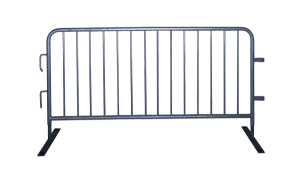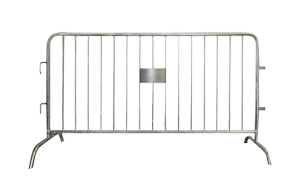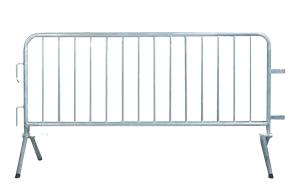What are Interlocking Steel barricades?
The original concept for interlocking steel barriers was patented in France in the early 1950s and produced by Samia SA.
Samia is now out of business, and the concept is in the public domain.
Samia licensed foreign companies to produce interlocking steel barriers for crowd control. Various local changes resulted in some variations – three that remain popular in the United States, plus a fourth variation from Canada.
Request a Quote for Classic Steel Barricades
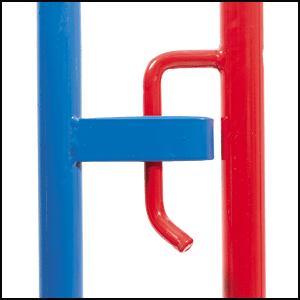
Samia accomplished this with a bend in the top male hook, which would enter a female receiver at an angle of about 30 degrees. Thus, when the frame was straightened, the “tip bend” would not have space to be pulled out.
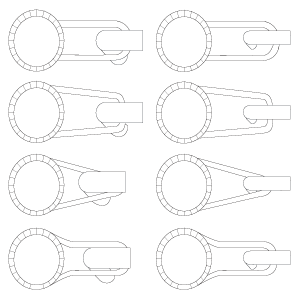
These variations explain why so many of the orphans on the market do not correctly connect, even when they are in the same relative position on the ground.

